Deep linking may sound like a technical term reserved for developers,
But it is the silent driver behind smooth user journeys, app engagement, and campaign tracking.
Whether you are a marketer running ads, a blogger sharing links, or a developer building an app, the way you handle links directly impacts user experience.
In this guide, we will break down traditional vs universal vs deferred deep linking, showing where each fits, their benefits, and the challenges you need to know before choosing the right strategy.
What Is Deep Linking in Mobile and Web Apps
At its core, deep linking is the practice of sending users to a specific destination inside a mobile app or website instead of just the homepage.
Instead of forcing a user to open an app and search for what they want, deep links take them straight to the right screen, product, or piece of content.
Think of it like skipping the line at a crowded event.
You don’t enter through the main door with everyone else, you walk straight into the exact room you were invited to.
How Deep Links Improve User Experience
Deep links cut down friction in the user journey.
Here’s why:
- Direct navigation: Instead of landing on a generic homepage, users get to the exact page they want.
- Personalized flow: Brands can create tailored campaigns that send users to content matching their interests.
- Faster conversions: By reducing extra steps, deep links help increase sign-ups, sales, or downloads.
A well-structured deep link makes a big difference in retention.
If someone clicks an ad for a new sneaker, they don’t want to search for it again inside the app.
Sending them directly to the product page keeps them engaged and improves the chance of purchase.
Common Use Cases of Deep Links
Deep links show up in multiple areas of digital marketing and user engagement:
- Email campaigns: Drive readers directly to product offers.
- Social media ads: Send users to specific in-app promotions.
- Referral programs: Reward users instantly by taking them to bonus pages.
- QR codes: When scanned, QR codes can lead users to app pages instead of just websites.
Tools like Linko make creating, managing, and tracking deep links much easier.
Instead of manually building them, marketers can generate short links, attach tracking, and see exactly how campaigns perform.
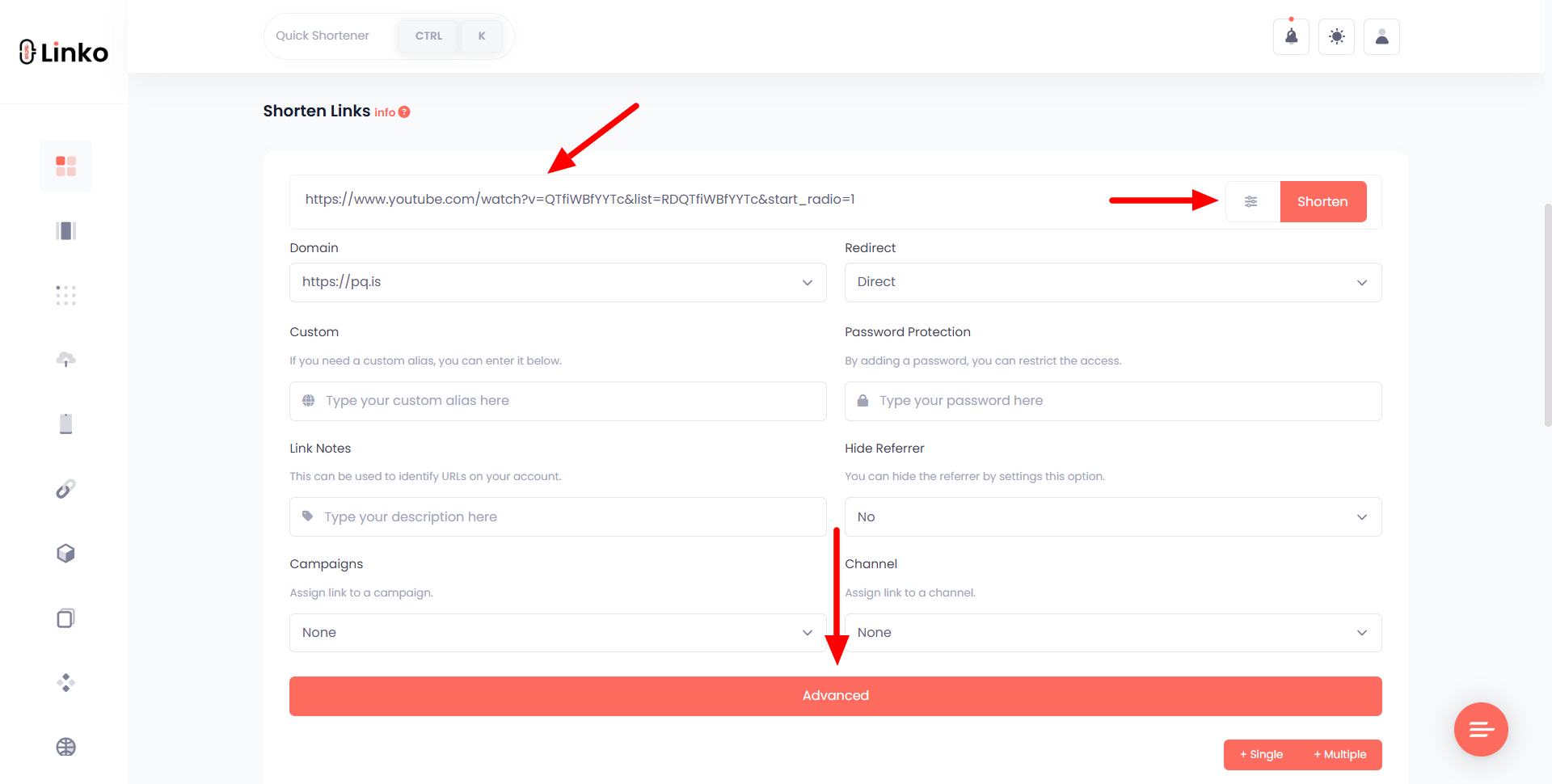
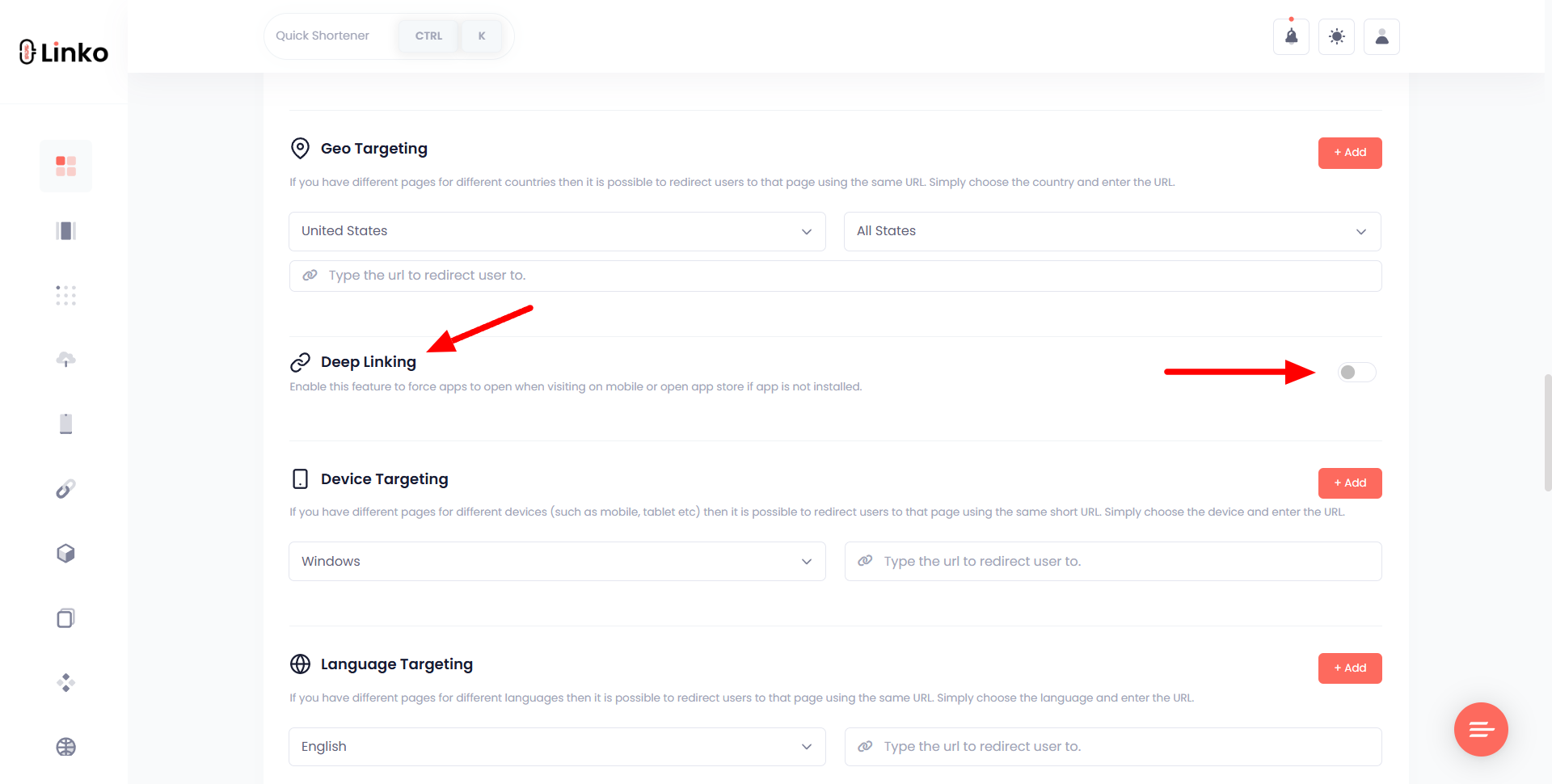
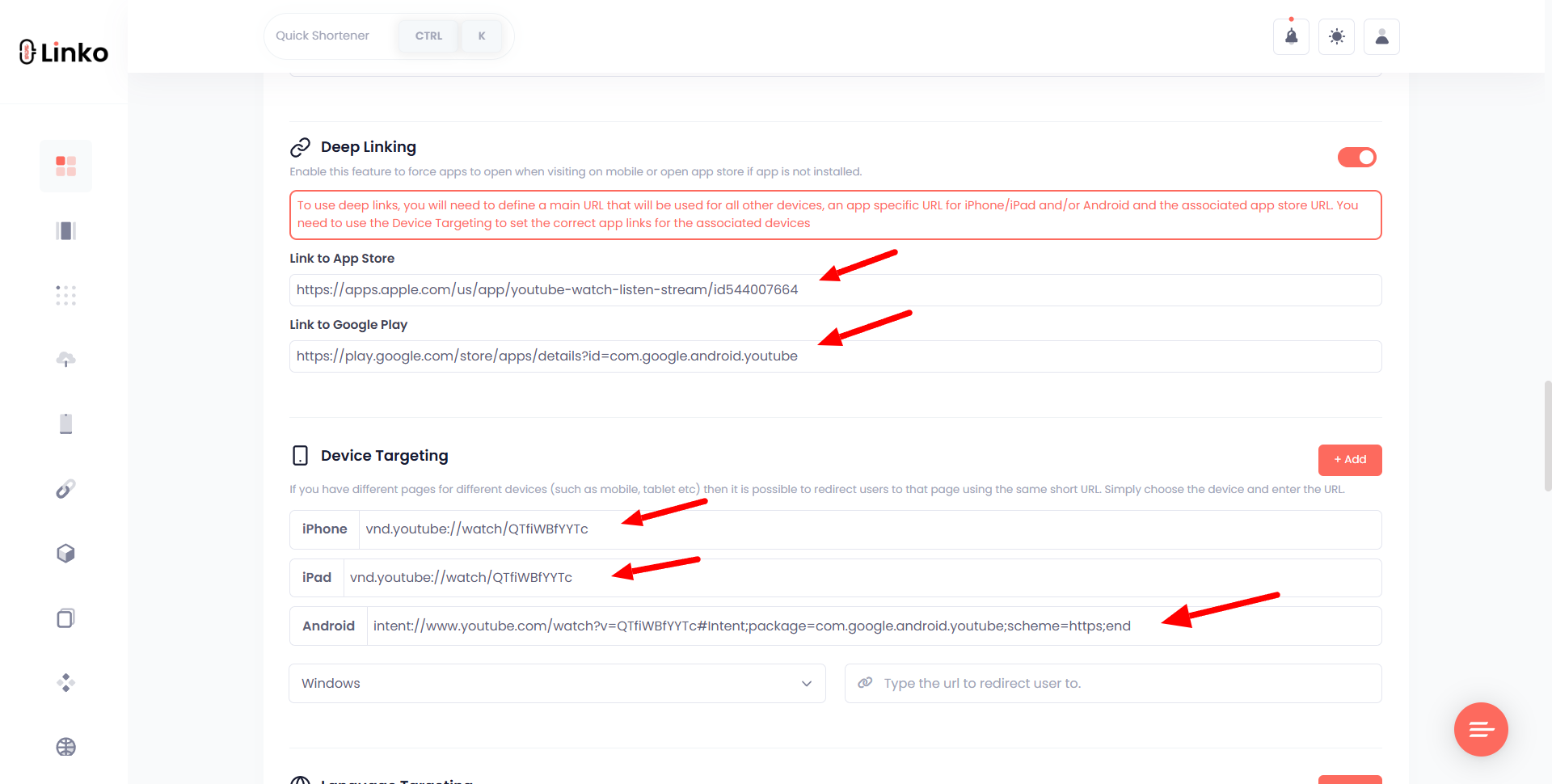
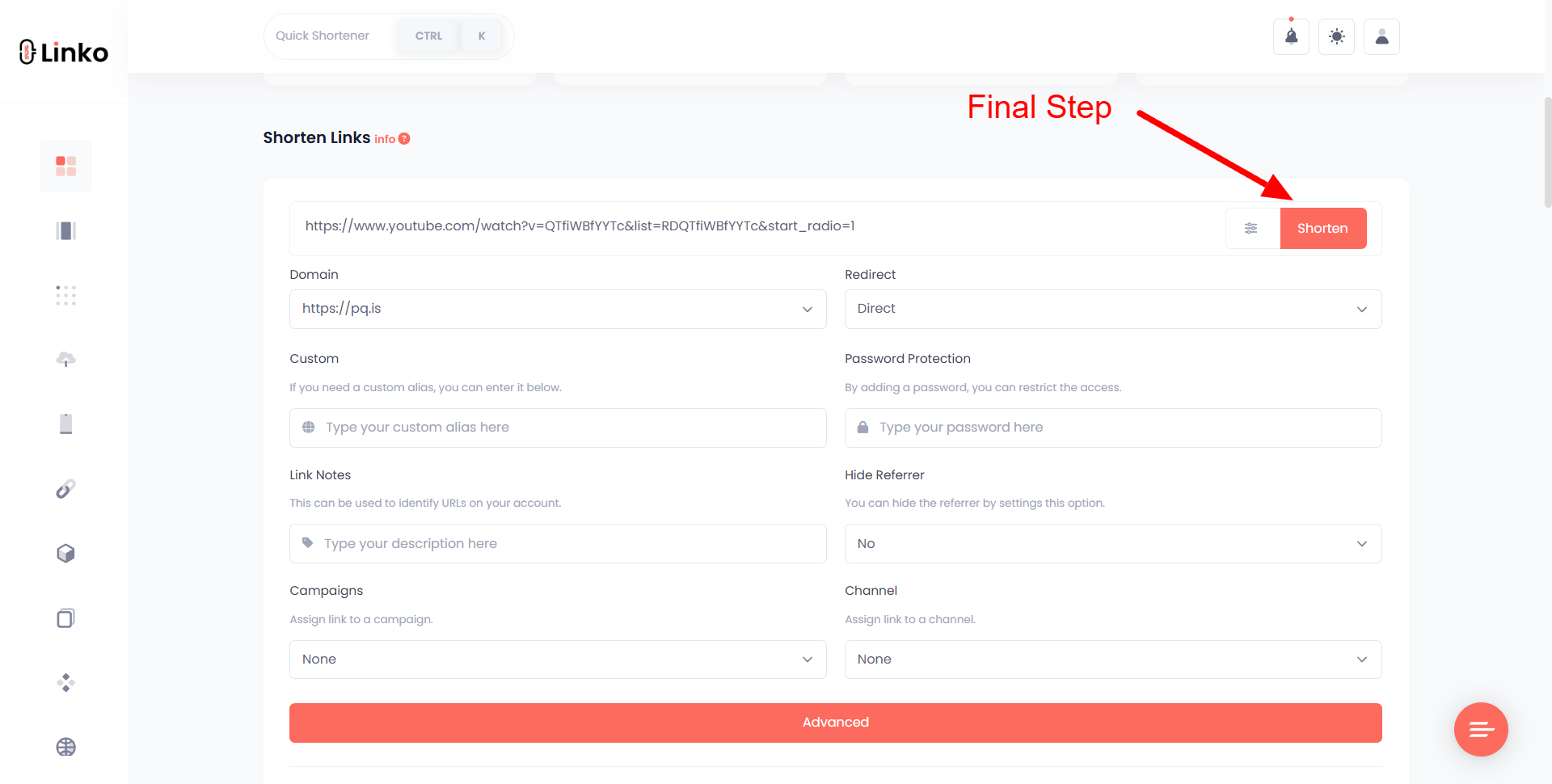
Understanding Traditional Deep Linking
Traditional deep linking was the earliest method of linking into apps.
It relies on using a custom URL scheme that tells the device which app to open and what content to display.
For example, a ride-sharing app might use something like myapp://ride/123 to open directly to a booking screen.
How Traditional Deep Links Work
These links only work if the app is already installed.
When a user clicks a link, the device looks for the app with that scheme.
If it exists, the app opens and takes the user to the intended screen.
If it doesn’t exist, the user usually sees an error or nothing happens.
In simple terms, it’s like calling a number that only works if the other person has the same phone carrier.
If they don’t, the call never goes through.
Advantages and Limitations of Traditional Deep Linking
Advantages:
- Quick and easy to set up.
- Works reliably when the app is installed.
- Gives developers full control over app navigation.
Limitations:
- Fails if the app isn’t installed.
- No fallback option (such as redirecting to the App Store).
- Can break in different OS versions or across devices.
“Traditional deep linking was groundbreaking at its time around 2006-2008, but in modern campaigns, its limitations often outweigh its simplicity.”
Examples of Traditional Linking in Marketing
Marketers used traditional deep links for simple campaigns where the target audience was already expected to have the app installed.
For example:
- An email to existing customers linking to a loyalty program inside the app.
- Push notifications that open directly to a specific feature.
Today, these links still exist, but most businesses prefer more flexible methods.
What Is Universal Deep Linking
As mobile ecosystems grew, both iOS and Android introduced more advanced linking methods.
Universal deep links (on iOS) and App Links (on Android) provide a more stable and user-friendly solution.
Key Features of Universal Links on iOS and Android
- Work even if the app is not installed: Instead of breaking, they redirect users to the App Store or Google Play.
- Browser fallback: If the app cannot open, users are redirected to the mobile site.
- Secure setup: They require domain verification, which prevents other apps from hijacking your links.
This means that if someone shares a universal link, it works across platforms, giving a smoother experience than traditional deep linking.
Benefits of Using Universal Deep Links
- Seamless user flow: They avoid dead ends, guiding users either to the app or app store.
- Improved marketing performance: Advertisers can run broader campaigns without worrying if users have the app installed.
- Cross-platform reliability: Works across iOS and Android with fewer compatibility issues.
From a marketing standpoint, universal deep links reduce the risk of lost conversions.
Instead of a broken link, you still capture user intent by directing them somewhere relevant.
Challenges Developers Face with Universal Links
While universal deep links are more reliable, they come with technical hurdles:
- Require SSL certificates and verified ownership of the domain.
- Complex setup across both iOS and Android.
- Testing can be time-consuming since each OS behaves differently.
This is where link management platforms like Linko play a role.
They abstract much of the complexity, giving marketers the ability to create universal links without manually handling every technical detail.
Exploring Deferred Deep Linking
Deferred deep linking adds another layer of intelligence.
Unlike traditional or universal methods, deferred links work even if the user doesn’t have the app installed yet.
The link remembers where the user was supposed to go and delivers them to the correct page after installation.
How Deferred Deep Links Function Across Platforms
Here’s how it works step by step:
- User clicks a link in an ad or QR code.
- The link checks if the app is installed.
- If the app isn’t installed, it redirects to the app store.
- After installation and first launch, the user is taken to the intended screen.
It’s like bookmarking a destination before you even download the map.
Advantages of Deferred Links for Acquisition Campaigns
Deferred links are powerful for user acquisition because they solve the install gap problem.
Benefits include:
- Smooth onboarding: New users land exactly where they expected, even after downloading the app.
- Better ad ROI: Paid campaigns don’t lose clicks when users don’t have the app yet.
- Higher conversion rates: Users don’t abandon the process midway due to broken flows.
Marketers often use deferred links in influencer campaigns, app install ads, and referral programs where they can’t assume the app is already installed.
Real-World Scenarios Where Deferred Links Shine
- App install ads on Facebook or Google: A user clicks an ad for a product, installs the app, and immediately sees that product page after opening it.
- Referral bonuses: A friend shares a referral link. Even if the recipient installs the app for the first time, they land right on the reward page.
- QR codes in physical stores: A customer scans a QR code and installs the app. When they open it, they are already inside the promotion page.
This method ensures that no matter what stage of the funnel the user is in, they don’t lose the context of why they clicked in the first place.
Traditional vs Universal vs Deferred Deep Linking Compared
When you put traditional, universal, and deferred linking side by side, the differences become clearer.
Each method has its own strengths, weaknesses, and ideal use cases.
Marketers and developers need to understand these distinctions before choosing the right path.
Technical Differences Between the Three Linking Methods
To make the differences easier to digest, here’s a simplified comparison table:
| Linking Type | Works Without App Installed | Redirects to App Store | Platform Support | Best Use Case |
|---|---|---|---|---|
| Traditional | ❌ No | ❌ No | iOS & Android (limited) | Internal navigation for users with app installed |
| Universal / App Links | ✅ Yes | ✅ Yes | iOS (Universal), Android (App Links) | Cross-platform campaigns with fallback support |
| Deferred | ✅ Yes | ✅ Yes + remembers context | iOS & Android | User acquisition and install-based campaigns |
Traditional methods are simple but rigid.
Universal links improve stability across operating systems.
Deferred links add intelligence, remembering the user’s original intent even after installation.
Marketing and Growth Impact of Each Approach
From a marketing lens, the choice of linking directly affects revenue and user growth:
- Traditional links are suitable for closed environments where you already know users have the app, such as email campaigns to existing customers.
- Universal links expand reach, ensuring no click goes to waste. They maintain flow whether the app is installed or not, protecting ad budgets from broken journeys.
- Deferred links unlock powerful acquisition strategies. By bridging the gap between ads, installs, and first-time app usage, they keep users motivated and reduce churn at the very first step.
Imagine running an ad campaign with 10,000 clicks.
If half of those users don’t have your app yet, traditional links would waste 5,000 clicks. Universal and deferred links ensure every click counts.
Which Deep Linking Strategy Fits Your Business Best
Your choice depends on your business goals:
- If you focus on existing app users: Traditional links are often enough.
- If you run cross-platform marketing campaigns: Universal deep linking provides reliability and reach.
- If you rely heavily on user acquisition or referrals: Deferred deep links are the clear winner.
“There is no one-size-fits-all approach. The best linking strategy blends these methods depending on campaign type and audience.”
Tools like Linko allow businesses to test, track, and adjust these strategies dynamically instead of locking into just one option.
Deep Linking for Marketers, Bloggers, and Creators
While the technical side is important, the real power of deep linking lies in its marketing potential.
Bloggers, influencers, and app-driven businesses can use smart linking strategies to maximize reach and engagement.
Driving Engagement with Personalized Link Journeys
A link is more than just a click, it’s a story.
Personalized deep links make that story smoother by:
- Sending users to tailored product pages based on ad creatives.
- Using referral links that carry user-specific codes.
- Directing audiences to subscription offers or gated content.
For instance, a YouTuber promoting an app can include a deferred deep link in their video description.
When viewers click, install, and open the app, they land right on the feature highlighted in the video.
This keeps engagement aligned with the original promotion.
Measuring Campaign Success Through Deep Link Analytics
You can’t improve what you don’t measure.
Deep links come with tracking parameters that allow marketers to:
- See which channels drive the most conversions.
- Measure in-app actions after a click (sign-ups, purchases, downloads).
- Test different campaigns with A/B testing deep link variations.
Analytics turn links from static pathways into measurable assets.
When you know how users behave after clicking, you can refine messaging and allocate budgets more effectively.
How Tools Like Linko Simplify Deep Link Management
Manually building and managing deep links is both time-consuming and error-prone.
Platforms like Linko provide:
- Bulk creation: Shorten, tag, and manage multiple links at once.
- Cross-channel tracking: Monitor link performance across email, SMS, QR codes, and social media.
- Campaign organization: Separate links into groups for better tracking and reporting.
Instead of worrying about technical issues, marketers can focus on creative campaigns while relying on Linko’s system for accurate delivery and analytics.
Future of Deep Linking in 2025 and Beyond
Deep linking continues to evolve as user expectations shift and mobile ecosystems tighten security.
Looking ahead:
- Privacy-focused design: With stricter data laws, deep link tracking will need to balance personalization with compliance.
- Stronger cross-device continuity: Users switching between desktop, tablet, and mobile will expect deep links to maintain context everywhere.
- Integration with QR and NFC: Offline-to-online journeys will grow, where physical scans trigger digital deep links.
- AI-powered personalization: Links will adjust dynamically, sending different users to different destinations based on predicted behavior.
In short, deep linking will become less of a technical trick and more of a core growth strategy for businesses that rely on digital journeys.
Final Thoughts
Deep linking is no longer optional.
Whether you are running small influencer campaigns or managing enterprise-level apps, your ability to guide users to the right destination defines engagement, retention, and revenue.
- Traditional deep linking is simple but limited to existing users.
- Universal deep linking offers reliability across iOS and Android.
- Deferred deep linking ensures acquisition campaigns convert without friction.
The smartest approach is not choosing one but combining them based on campaign needs.
By using platforms like Linko, businesses can manage these strategies under one roof while keeping analytics, tracking, and personalization intact.
Deep links are not just about navigation.
They are about building trust, saving users time, and turning clicks into loyal actions.
FAQs
What is the difference between deep links and normal links?
Normal links direct users to a website homepage, while deep links send them to a specific in-app or on-site location.
Do universal links work on both iOS and Android?
Yes. iOS uses Universal Links and Android uses App Links, both of which serve the same purpose, redirecting users seamlessly to apps or fallback web pages.
Why are deferred deep links useful for marketers?
They ensure that even if the app is not installed, the user still lands on the intended screen after installation, improving conversion rates.
Can I use deep links in SMS or QR codes?
Absolutely. Many brands use deep links in SMS marketing or print QR codes that take customers to specific in-app promotions.
Do I need a developer to create deep links?
Not always. Tools like Linko make it possible to create, manage, and track deep links without coding. Developers are only required for advanced custom integrations.
Which type of deep linking is best for app install ads?
Deferred deep linking works best because it ensures users see the promoted content even after installing the app.

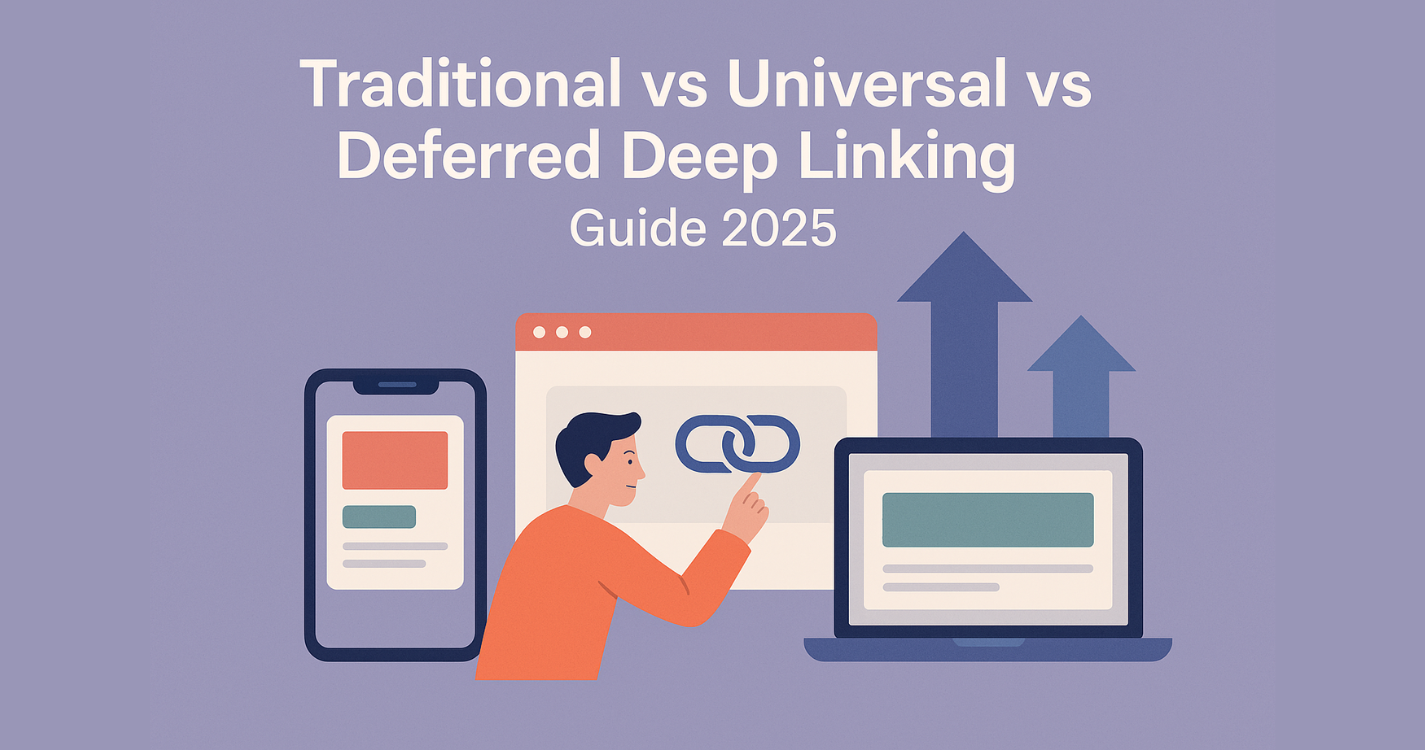
Comments